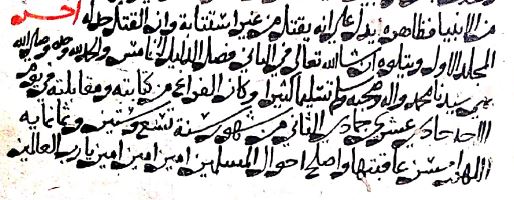The only surviving manuscript of Aḥkām ahl al-dhimma was completed in 869AH/1464 CE. You can see the date in the colophon here.
There’s no information on the manuscript itself about who owned it or how it was used. There’s not much evidence that the text was circulated at all until the 18th century, when ownership marks begin to appear on the front page.
One of these refers to the manuscript being bought by Ibn Muḥammad b. Ismāʿīl al-Amīr. I think that’s the son of the Yemeni scholar, Muḥammad b. Ismāʿīl al-Amīr al-Ṣanʿānī (d. 1769).
Al-Ṣanʿānī is almost the only pre-20th century scholar to refer to IQ’s unusual ruling about a wife’s conversion. Maybe he found it while reading this very manuscript, that his son bought for him.
So the manuscript was moving around Yemen and the Hijaz, to judge from this and other ownership marks. This corresponds to the fact that Ibn al-Qayyim and Ibn Taymiyya were more popular in this region than in Sham.
Probably in the late 19th century it was bought and taken to India, where it entered the private library of Muḥammad Ṣibghat Allāh (d. 1863).
Don’t say you've not heard of Muḥammad Ṣibghat Allāh! He was the chief judge of Madras/Chennai, an esteemed Islamic scholar and a dedicated manuscript collector. He and his sons used the hajj to buy manuscripts for their collection so maybe this is how IQ’s text came to Chennai
He was also a strong opponent of the colonialist rule over India, and an interest in the political relation of non-Muslims to a Muslim state might be what attracted him to this manuscript in particular.
I’m going to start a new thread for the next bit of the history, because it relates to another important chapter in the manuscript history.

 Read on Twitter
Read on Twitter


